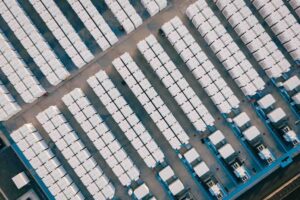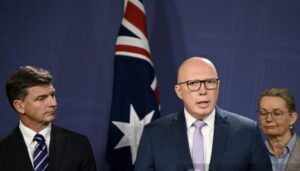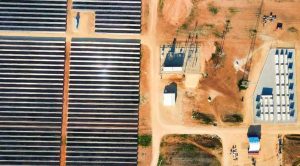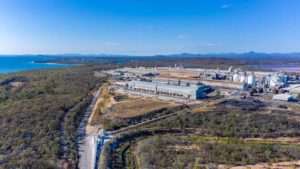It seems certain that it will not just be the general population that will be reassessing climate risk in the wake of the extraordinary heat wave to have hit Australia this year – as they did in America with Hurricane Sandy – it will also be stock market investors.
Climate inflation is a rapidly emerging theme in global stock markets – or at least it should be after the International Energy Agency last year pushed the concept of a global “carbon budget” into the mainstream. We discussed last October what that might mean for the fossil fuel industries and those whose company valuations are based around fuels they have yet to extract.
In recent days there have been a couple of really good reads on what the Australian heat waves might mean for the general population, and potentially for politics – Tim Flannery and George Monbiot are just two of them. Like the constituencies of the punter and the politician, the overwhelming majority of the investment community have also been kidding themselves about the looming impact of climate change, finding it much more convenient to put into the too hard basket.
The mainstream media, as pointed out today by Maria Taylor, haven’t bothered to wake them from their slumber. Indeed, our very own national financial daily last year concluded an editorial covering the Doha climate talks by suggesting we just focus on adaptation. Has anyone there studied economics? It is not just old perspectives being stranded, as Monbiot suggests, it is real assets, and trillions of dollars of them.
More than a week ago, HSBC Bank – one of the few remaining global institutions with a team dedicated to assessing climate risk – released a detailed report underlining what it expects to be one of the major investment themes of 2013 – the growing disconnect between ever-stronger evidence of climate change and the inadequate policy response, and the insouciant attitude of the global stock market and investors towards “climate inflation.”
“We believe 2013 will be a year of transition – negative pressures against the low-carbon economy will lessen, with positive momentum emerging in a number of areas,” the HSBC economists wrote. It said the long-term risks facing fossil fuel assets – which have yet to be priced into the market – will start to become more widely understood.
A week later, they have updated their report following the extraordinary heat wave which has impacted nearly the entire Australian continent, and broken a host of long standing heat records over the past week.
“…(This) is the first manifestation of one of our key themes for 2013: Facing up to climate inflation,” the economists wrote. “To deliver emission reductions in line with a carbon budget for less than 2°C warming, countries must step up. We think the trigger for an uptick in policy momentum is, unfortunately, increased disruption caused by extreme weather, combined with a greater focus from climate scientists on attributing short-term weather extremes to longer-term temperature gains.”
For many investors, this adds up to an extra layer of uncertainty. “Weather disruption impacts the value of assets to varying degrees in many ways,” HSBC noted. It can trigger price rises in base commodities such as food prices (as experienced during the US drought), cause earnings to be downgraded due to flooding (as experienced in Australia in 2011), or have an impact on electricity markets (as experienced in hydro-dependent Brazil through its current drought). Numerous countries remain vulnerable to water stress – particularly the two fastest growing, India and China.
But the biggest impact for investors will come from the return of “climate risk”. This risk has become virtually negligible as international carbon prices plummet in the past year. But this is merely a factor of the growing disconnect between the science and the policy, and HSBC argues that events such as Hurricane Sandy, the Australian heat-wave, and droughts and flooding in numerous other countries – will refocus attention on how that will be addressed.
As it notes in this accompanying graph, the frequency shift of the number of years posting a temperature anomaly of more than 3 standard deviations from the 1951 – 1980 year mean is “startling.”
“Global greenhouse gas emissions will continue to rise, putting the world on track for long-term warming approaching 4ºC, far above the 2ºC target,” they write. “To narrow the gaping jaws between policy ambition for emission reduction and the carbon budget for a 2ºC world, governments will begin serious negotiations this year to deliver a global climate agreement in 2015.”
It believes that the macro and market agenda for investors in 2013 will be driven by five key themes:
1. Facing up to climate inflation: 2013 is set to be another year of above-average global temperatures. Drought in the USA in 2012 highlighted the vulnerability of commodity prices to turbocharged weather risk, a feature that will persist. Awareness of the severity of climate impacts will be confirmed in September when the IPCC publishes its fifth review of the science of climate change.
2. Welcome back carbon risk: Across the world, 2013 will mark a modest tightening of carbon constraints, with new trading schemes in California and China, as well as efforts to rebalance the EU ETS. We also believe that the long-term carbon risks facing fossil reserves will rise up the agenda as investors investigate the risk of stranded assets if and when climate policies tighten. Our research on coal suggests that these risks are material, but not yet priced in to capital markets. We also believe that the long-term carbon risks facing fossil reserves will rise up the agenda as investors investigate the risk of stranded assets if and when climate policies tighten.
3. China – No.1 climate nation: China is not just the world’s largest emitter of carbon, in 2013 it will become the largest market for solar PV. We also believe its Five Year Plan policies will start to temper the upward trend in coal use through a convergence of policies on energy, water and pollution. In 2013, we believe China’s climate agenda will be played out in two interlocking ways. First, China will continue to increase coal use and emissions, but at a slower rate as the 12FYP policies for economic strategy, energy, water and pollution kick in. China will also introduce new cap and trade systems for carbon in five municipalities and two provinces which collectively account for over a quarter of national GDP. Second, China has long been the biggest manufacturer of solar technology; in 2013, it will also be the largest market for solar for the first time as it moves to boost domestic installations following the solar disputes with both the US and Europe.
4. Efficiency bites for energy and water: Policy attention allied with a fundamental supply-demand mismatch has made resource efficiency in energy and water resilient investment themes. Looking at 2013, our Quantitative Research team believes that water and building efficiency offer the strongest earnings growth amongst its 21 climate themes in global equity markets.
5. Clean tech turnaround: The profound disconnect between aspirations for renewable energy, volume deployment and market valuations will persist in 2013 – but with a new dynamic. In 2011 and 2012, growth in wind and solar installations were strong, but share prices remained weak. In 2013, solar installations will flatten and wind in sharp decline; the latter due to regulatory uncertainty in the USA. Structural over-supply will continue in solar and wind – as well as in electric vehicles and LEDs. But consolidation and closure could be followed by a volume rebound for clean-tech firms in 2014 .
“We think 2013 will be the year of wider acknowledgment of disconnect between existing policy ambition at a country level and the emission reduction requirement to stay on track for temperature rises to remain under 2°C.
“As temperatures climb, disconnect between science and policy will grow. We think that carbon risk will return as a market driver and that China will deepen its dominance of the climate economy. In terms of investment opportunities, energy efficiency and water management continue to offer strategic upside. The great disconnect is here. “












